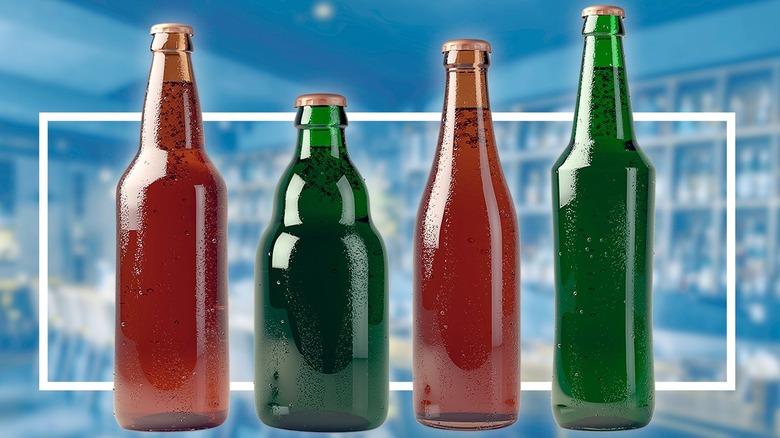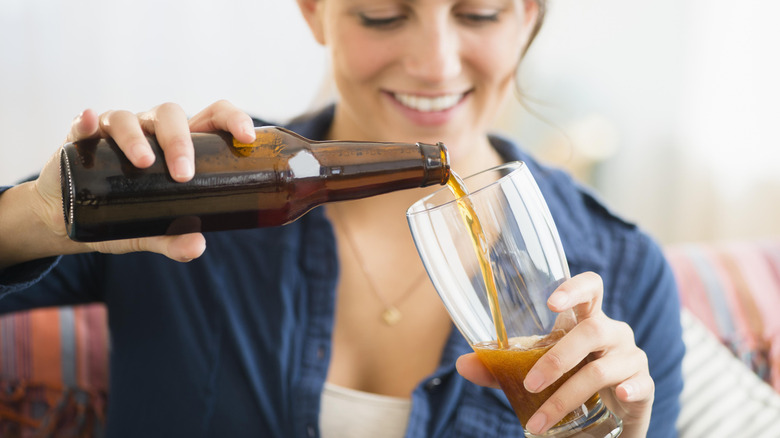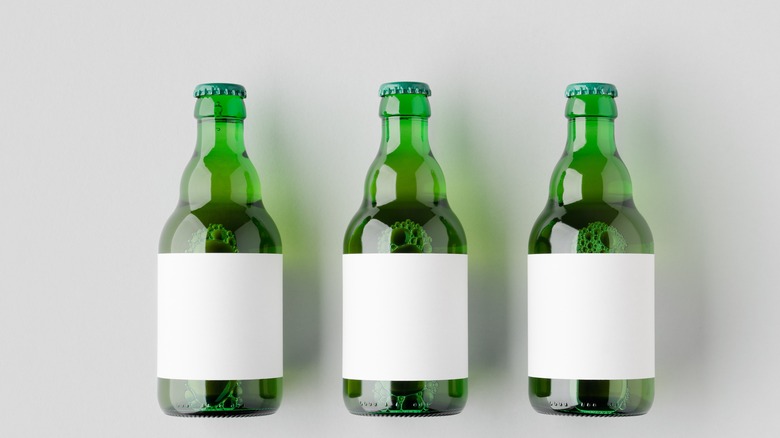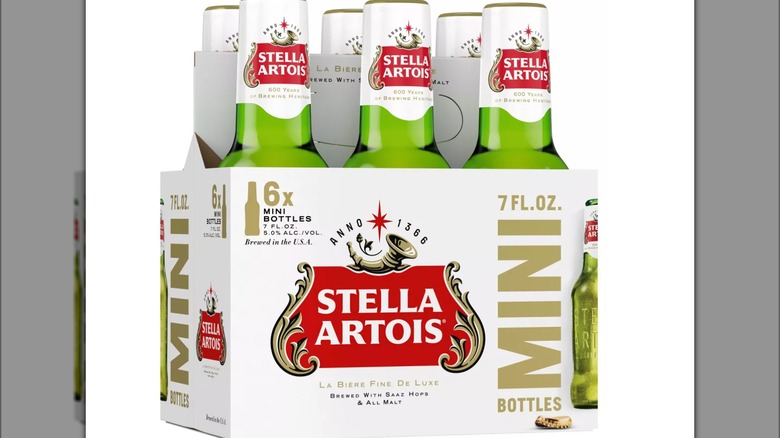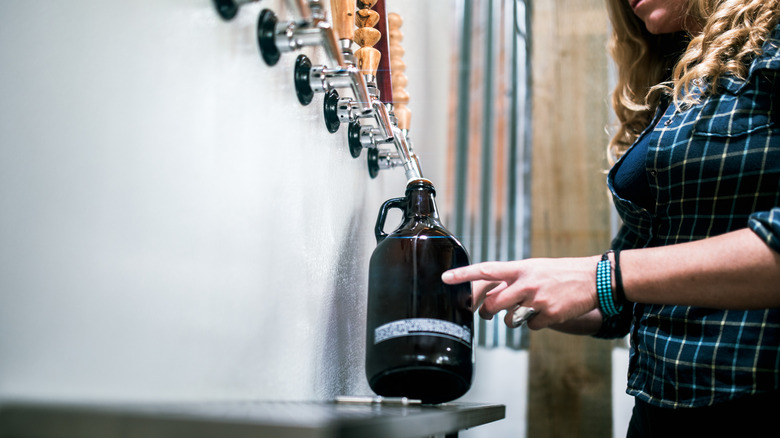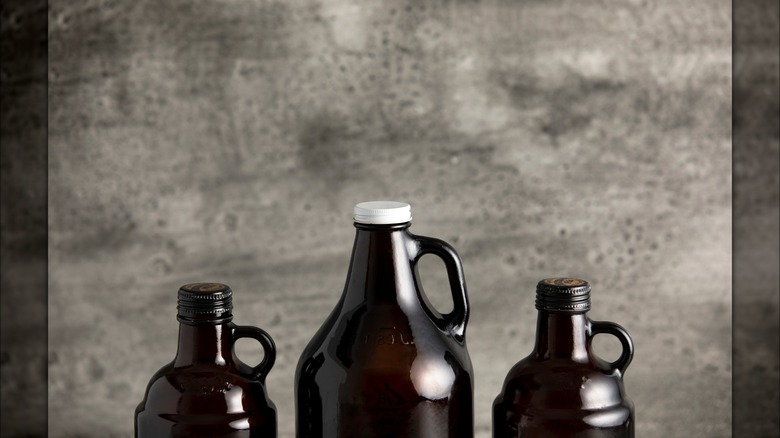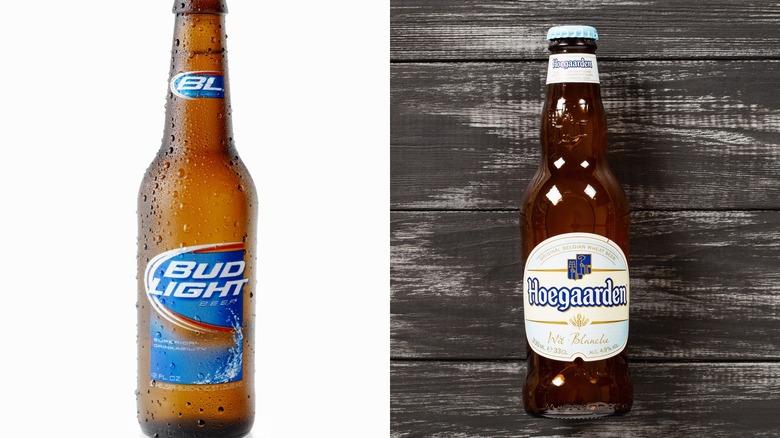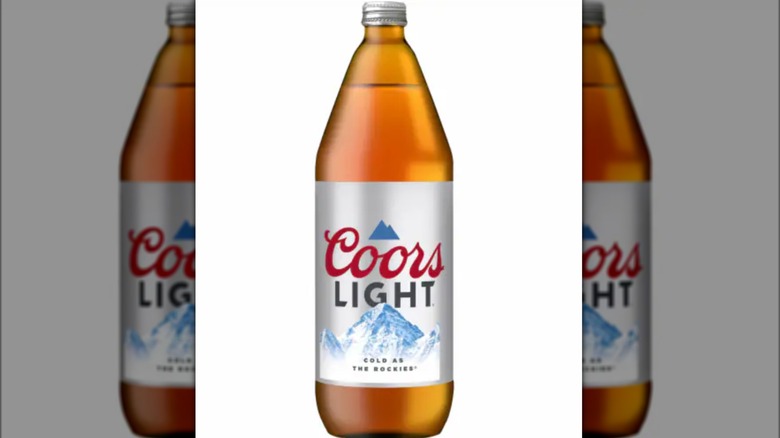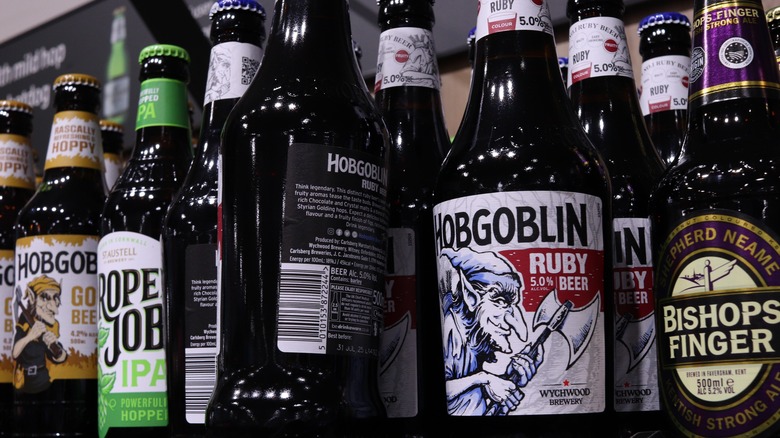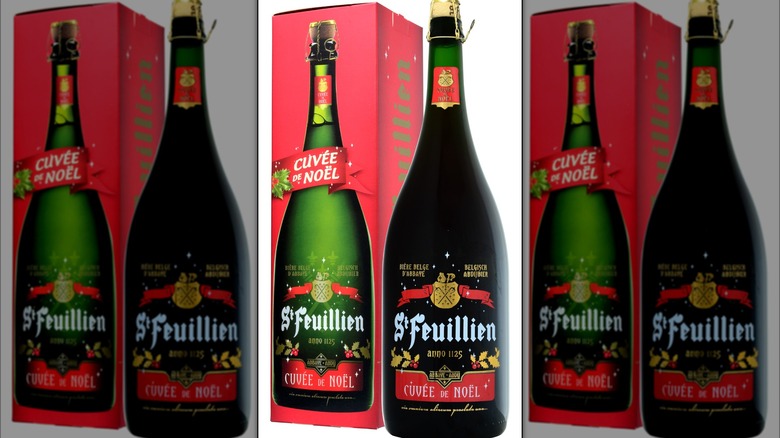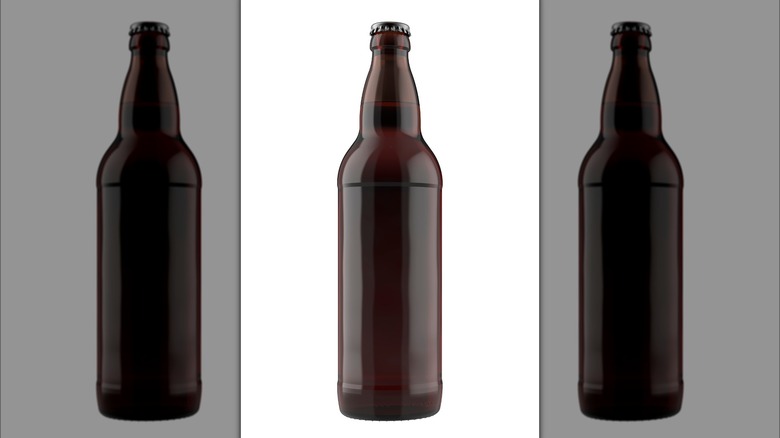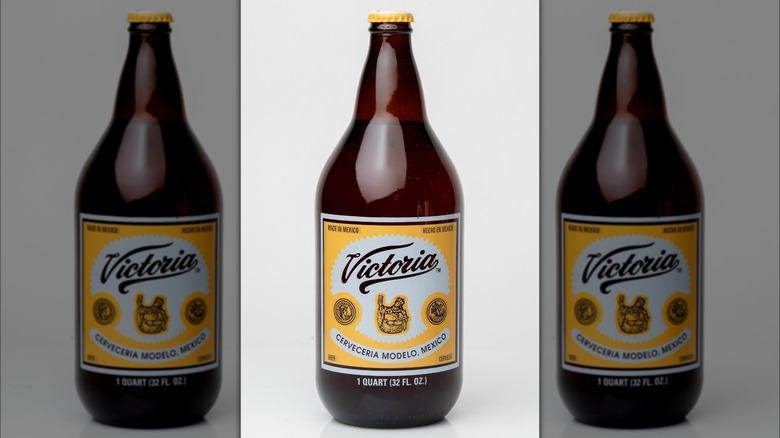The Ultimate Guide To Beer Bottle Sizes
We may receive a commission on purchases made from links.
Beer has been one of the most popular types of alcoholic beverages for hundreds of years, and some of its history can even be traced back to B.C. times. But what about the bottles that the beer comes in? Over time, there have been a large variety of shapes and sizes of bottles, and today, many of them still exist.
Various beer bottle sizes aren't just for the idea of holding more or less beer. They also serve other purposes — like how a different shaped bottle can be better for a Belgian beer versus an IPA beer. Some bottle sizes exist for the purpose of transporting large amounts of beer at once. Others exist purely because certain brands wanted to make a different size, and others followed suit.
There are probably a lot more beer bottle sizes than you might think. In this guide, we're going to walk you through all of the beer bottle sizes that have existed in modern day. We'll let you know the brief history of these bottles, their uses, and what brands carry the size option today.
Pint
The pint is a true classic. If you've ever been to Ireland, and not gotten a pint at the bar, did you really go to Ireland? Now, we know that pints are a type of glass that beer is served in at many bars around the world. But did you know that it's a bottle size, as well?
When it comes to British and American measures of a pint, there is a difference. The U.K. follows the imperial pint, which is about 20 ounces, and was established by King Charles II. However, in the United States, a pint is considered to be 16 ounces. Despite the discrepancy in measurements, a pint is a true staple of pub culture. The pint is usually synonymous with craft beers, or the famous Guinness.
At home, you can have a pint as well. There are tons of brands that sell 16 ounce bottles in the United States, like Budweiser, Weihenstephaner Hefeweissbier, and Coors Lite. These are great options if you have your own chilled pint glasses at home, and want to pour your bottle straight into those. The pint-sized bottle is also popular for people who brew their own beer at home, and there are many companies that sell empty 16-ounce bottles.
Steinie
A steinie, also known as a stubbie, is one of the smaller sizes of a beer bottle, and it was a common size to see in the mid 20th century. It was first introduced in the 1930s, after Prohibition. It's said that the steinie bottle was created in response to beer beginning to be held in cans, and to protect the future of glassmakers, the steinie was created. It also apparently saved on glass and shipping costs, which was needed after the economic effects of Prohibition.
The steinie is measured at 11 ounces, and remained a popular size for American beer until about the 1970s. One company that popularly used the steinie size back in the '60s and even pushed through to the '80s was Miller. In 2015, there was a resurgence of the steinie for Miller Lite beer, and then again in 2016. You can actually still pick up a Miller Lite steinie in some liquor stores today, as well as the Stella brand which offers the steinie size. There are some brands that sell 11.2 ounce bottles — and the closest category that the bottle size fits in would be the Steinie. You can get a pack of Kronenbourg, or non-alcoholic Stella.
Pony
When many people think of the word pony, they think of something that is a miniature of something else. That's exactly what the pony-sized beer bottle is. In America, the pony is close to a half-pint size, at just 7 ounces. This size is also referred to as a nip or a grenade.
The origin of the pony-sized beer bottle can be traced back to sometime in the '70s, and is actually a popular size to get beer in today. Many people tend to opt for this size when they don't want to commit to an average-sized 12-ounce beer. Another great benefit to the pony beer bottle is that it gets cold quickly, and doesn't get warm as fast. One popular brand that sells the pony size is Corona, except it refers to the beer in the tiny bottle as a Coronita. This size must sell well for Corona, if the company has an entirely new name for this petite bottle.
Other brands that you might come across that sell the pony-sized beer bottle are Miller, Stella, Heineken, Modelo (which follows suit with Corona, and calls its pony size a Modelito), and Rolling Rock. If you love to sip on a beer, but don't necessarily want to commit to drinking a large amount, it's great to know that the pony size is an option.
Growler
Many beer lovers are familiar with the growler-size beer bottle, especially in the craft beer world. What you might not know, however, is its interesting history. The true origins of the growler date back to the late 1800s. At this time, there were no individual beer bottles that were made and sold with beer in them. Instead, people would go to their local brewery or pub and fill up a bucket of beer to keep at home. Now, these buckets were difficult to carry without splashing the beer all over, and some people had to walk quite a way to get home. Apparently, as they walked in a steady manner, the beer made a growling noise, and that's where the term growler came from.
Fast forward a couple hundred years, and we have our modern day growler. A growler holds about 64 ounces of beer, and is used to this day to transport draft beer to people's homes. In 1989, Grand Teton Brewing (known as Otto Brothers' Brewing Company back then), wanted to create a way for its customers to take home beer easily. The brothers discovered the old way of transporting beer from the 1800s, and decided to make the version that we know today — a large, jug-like glass bottle that holds a large amount of beer. Today, almost any craft beer shop or brewery that you step foot in will have the option of filling up a growler to take home.
Howler
If you're a "Harry Potter" fan, you think of howler as the magical screaming letter that gets delivered when you disobey your parents. In the world of beer, however, it's simply a beer bottle that is sized to a half growler. Howlers are 32-ounce beer bottles, and they're more of a jug-looking bottle.
There are a few reasons that people opt to get a howler versus a growler. For one thing, growlers stay fresh, unopened, for five to seven days in the refrigerator. Once it's opened, that window gets shorter. They are designed to be consumed fairly quickly. So, if you're not sure that you'll consume the whole 64-ounce bottle of a growler, opting for the howler is a safe option. Another great use for a howler is if you are indeed intending on drinking a lot of beer, but you want a few different drafts to have. Instead of getting one growler of one beer, you can get two howlers and get two different kinds of beer.
Belgian and longneck
The Belgian and longneck-sized beer bottles are the most common sizes that we see today. An average Belgian beer bottle is about 12-12.7 ounces. This beer bottle size is also synonymous with the thicker, uniquely shaped neck. The longneck is also around 12 ounces, with a sleeker neck, just slightly smaller than the Belgian — however the two tend to be interchangeable. These both can be traced back to the end of the 19th century into the 20th century, when many glass bottles were being made in these sizes and styles.
The only main difference between the two bottles is the neck shape. The Belgian bottle was designed to prevent yeast particles from getting into a glass when being poured. The longneck, on the other hand, was designed to have a shorter transition between the body of the bottle into the neck, better for controlled pouring.
Today, you can find most Belgian-style beers being sold in the 12-12.7 ounce Belgian bottle. Popular beer brands that you'll probably buy in the Belgian bottle are Blue Moon, Allagash White, and Paulaner. Brands that famously default to the longneck-sized bottle include Bud Light, Michelob Ultra, and Corona.
Forty
"Grabbing a forty" is a common term you've probably heard from college students or young adults on a night out. You may have even played the game "Edward forty hands,"which is where you get two forties and tape them to your hands. You're not allowed to remove them until you finish both bottles.
This size beer bottle is named a forty simply because it's a 40-ounce bottle. This bottle size became incredibly popular in the 1980s, and started out as a vehicle for malt liquor, which tends to have a higher alcohol content than other types of beer. Many famous rappers, like Snoop Dogg and Ice Cube, appeared in commercials that advertised brands who sold forties. This beer bottle size was a sort of cultural phenomenon, and played a big part in many people's teens and young adulthoods.
Today, you can still find forties in some areas, however there are some restrictions in place. Florida, for example, has a law in place that no malt beverages can be sold in bottles larger than 32 ounces. The city of St. Louis, Missouri, has regulations on the sales of forties — saying that each customer is limited to one forty at a time. Depending on where you are in the country, you may still be able to get ahold of a forty pretty easily.
British
The British bottle is what an average sized beer bottle is in the U.K. Just like how the pint sizes over the pond are a bit bigger, the U.K.'s regular beer bottle sizes are larger than the United States as well. The British-sized beer bottle holds 500 milliliters, which is 16.9 ounces. That's a whopping 5 ounces more than the 12-ounce bottles us Americans are used to.
It's no secret that there's a stereotype that people from the U.K. can outdrink an American any day. However, there are some statistics that prove that idea to probably be true. For one, the legal drinking age in the U.K. is 18, while in America the legal drinking age is 21. That gives the Brits three extra years to gain a higher alcohol tolerance. In 2018, the World Health Organization discovered that the average American drank 470 pints of beer per year, while the average British person consumed 1,100 pints of beer per year.
Now, knowing these facts, it only makes sense that the average beer bottle size in the U.K. would be larger than the average American size. It looks like in the United States, there are a few (emphasis on few) brands that do sell the British-sized beer bottles, like Samuel Smith and Duvel.
Magnum
Magnum bottles are 50 ounces, which is about 1.5 liters. Now, this size bottle is normally connected to Champagne or wine. However, in recent years, it's popped up as a popular beer bottle size as well. In 2017, Heineken offered a limited edition magnum-sized bottle of beer for the holidays. Other brands, like Duvel, have offered the size, too.
Craft beer breweries, however, are where you'll most likely find a magnum beer bottle. Many of these breweries offer special edition brews in this size, which tends to line up with holidays or major events. According to the co-founder of Brewery Bhavana in Raleigh, North Carolina, the carbonation levels that can be attained with a magnum bottle are impressive. He even prefers the taste of most beers when they sit in a magnum for months versus a smaller bottle.
Most magnum-size beer bottles have a cork on top, and are treated like a bottle of Champagne. Once it's open, you'll have to finish it. This is a great option if you are serving beer at an event or a gathering. However, if you're drinking the bottle alone, it may not be the ideal bottle size.
Bomber
A bomber bottle is another type of large format beer bottle. It's 22 ounces, which is a little less than double of the average-sized beer bottle in the United States. The bomber is also sometimes referred to as a dinner-size beer bottle, and that's because this type of bottle was commonly used for sharing amongst colleagues or friends at a dinner.
In 2008, there was a company based in Portland, Oregon called Green Bottling which helped small breweries bottle beer to distribute further than just in Portland. This company made the 22-ounce bomber beer bottle popular amongst these craft breweries. Eventually, grocery stores in Oregon had bomber bottles on the shelves, representing many local breweries. Today, you can get bomber bottles of popular brands like Blue Moon, Guinness, Lagunitas IPA, and many others. Ultimately, bomber bottles are being seen less and less, as people tend to gravitate toward six-packs instead of one large bottle.
Caguama bottle
A Caguama beer bottle was created by a Mexican brewery called Cervecería Cuauhtémoc in the 1960s. The name caguama actually comes from a type of sea turtle that's found in Mexico. The bottle is between 32 to 40.5 ounces, or around a liter, and the purpose of its creation was to create a family-sized bottle of beer.
Today, some Mexican-style beers can be found in the caguama size, like Carta Blanca. You may also come across the caguama bottle at a restaurant — like the Mexican/Chinese fusion restaurant in Philadelphia named La Chinesca. The restaurant shared a post that featured a caguama bottle of beer. The post says, "drink your beer the Mexicali way ... A 'caguama' is a 32-ounce bottle of beer wrapped in newspaper and served with 8-ounce sharing glasses." It looks like if you were to take a trip to Mexico, you would probably come across many caguama bottles in both restaurants and at liquor stores.
